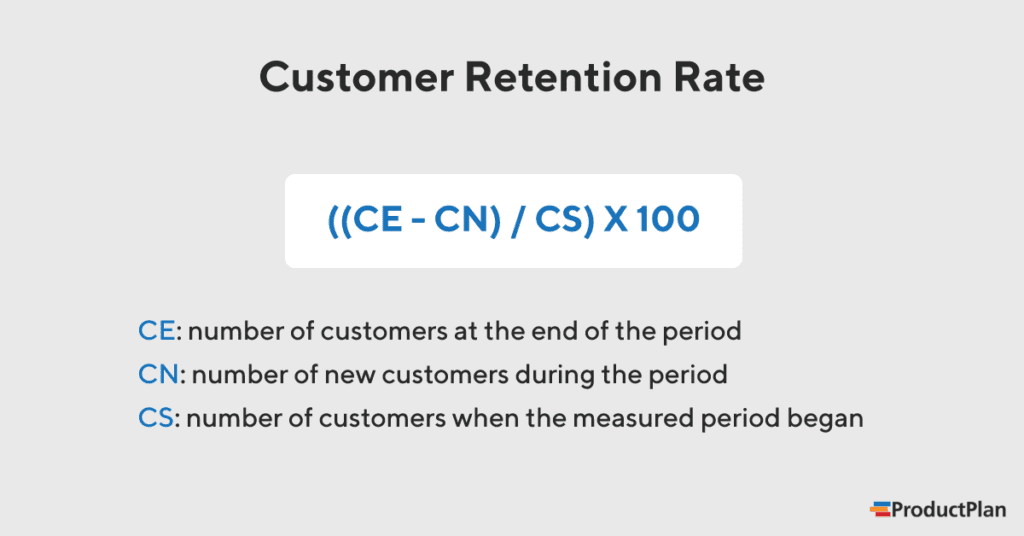What Is Retention?
Customer retention refers to a company’s or product’s ability to retain customers over time. If a company or product has high customer retention, it means that customers return to purchase or continue using a product or service. If a company or product has low customer retention, it means that customers stop buying or using a product or service.
Why Is Retention Important to Product Management?
It costs quite a lot more—roughly 5 – 25 times more—to acquire a new customer rather than keep an existing one. Therefore, delighting existing customers and striving to keep them satisfied should be the goal.
Additionally, retention impacts ROI, overall business growth, and customer loyalty. Loyal customers are more likely to stick with a trusted company when exploring additional products or services; they are also more likely to refer colleagues, friends, or family (i.e., potential new customers at no cost to you).
According to HubSpot:
“Customer retention is important because it measures not only how successful they are at acquiring new customers but also how successful they are at satisfying existing customers.”
Building products that delight customers and keep them coming back starts with product discovery. This process enables product teams to move beyond “nice to have” features and products towards products that solve a problem.
How Do You Measure Retention?

The most basic method of measuring retention is to compare the total number of customers at the beginning and end of a specific period. Then, exclude any new customers acquired during the same period.
8 Tips for Improving Retention
Here are eight tips to help improve customer retention:
- Know Your Customers: A profound understanding of customers helps you build products that will delight them and keep them satisfied.
- Manage the Product Experience: Good product experiences (i.e., understanding what customers want, how they feel about the product experience, and what they’re doing) increase usage and build loyalty.
- Value and Protect Your Customer Relationships: Recognize that your users are human beings and that your relationship with them requires intentional stewardship. Don’t take these relationships for granted.
- Engage Customers and Reward Loyalty: Look for opportunities to connect with your users. Consider developing a program that rewards their continued loyalty.
- Gather User Feedback: Take to heart what your customers share with you and provide support on the right channels.
- Share Your Gratitude: Remember to let your customers know that you appreciate them–the more personal you can be, the better the result.
- Understand Churn: Figure out why some customers churn.
- Understand Your Most Loyal Customers: Examine the attributes of your most loyal customers and identify commonalities.
Related terms: Customer Empathy / Product Tree / Lifetime Value / Customer Acquisition Cost / Churn / User Experience
